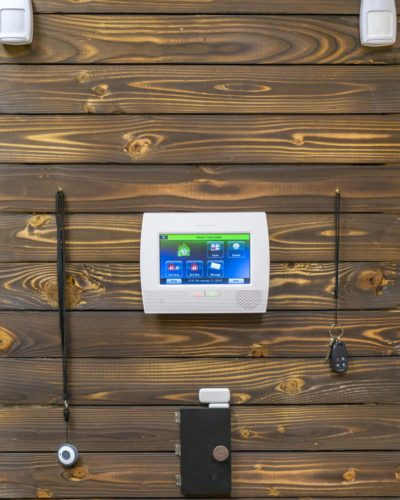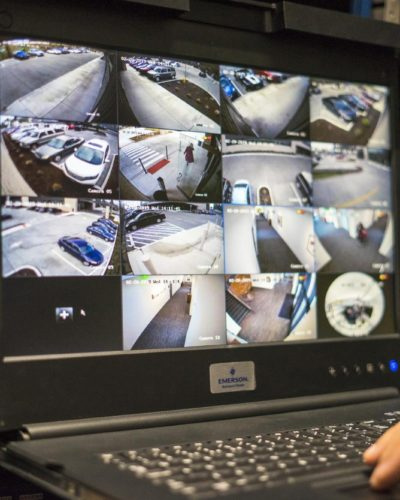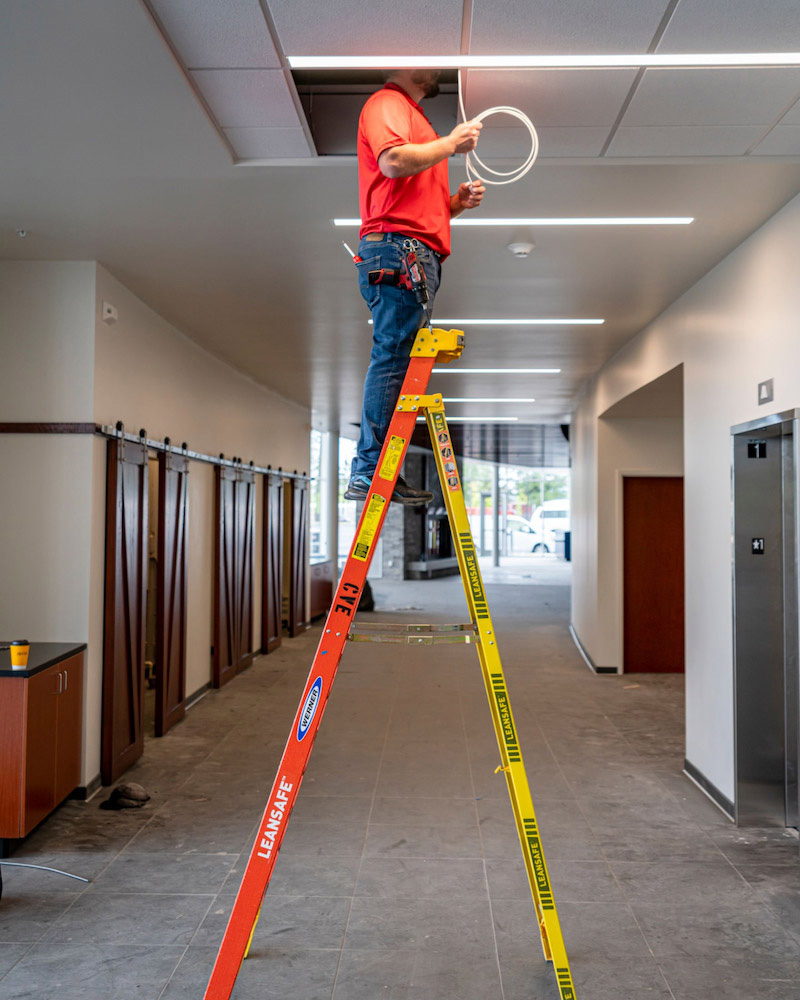When you own or manage a commercial space, one thing that always has to be top of mind is making sure that your building is secure. Whether it is bad actors looking to steal from your building, or just a random person coming in to use your space inappropriately, making sure your building is secure is crucial for the safety and comfort of your employees.
Keep on reading to learn about 7 ways to secure your commercial space.
Install a security system

Step 1 for securing a commercial building is installing a reliable security system. Security systems work by alerting a monitoring service (or individual) that a building has been breached. This could be an opened door, a broken window, or any other type of intrusion. Systems can be set up to only operate at specific times or at all times.
Security systems are a crucial part of securing spaces because they provide a backstop for intrusion. Even if you have a security guard or are keeping a watchful eye on your property, nobody can be looking at all places at all times. Security monitoring systems make sure that no matter what, no intrusion will take place without your knowledge.
We offer multiple different security monitoring systems for all different size buildings and situations. We’ll help you select the perfect one.
Hire a reliable security monitoring team
While we can talk all day about the importance of a solid security system, the reality is that a security system is only as good as the monitoring team keeping an eye on the system.
Good monitoring systems operate 24/7, use advanced monitoring technology, and feature helpful customer service. This ensures that your property is protected from intruders, but an accident will not cause the entire city’s SWAT team to show up when you get to the office 15 minutes early.
Low Voltage NW’s monitoring partner, Monitoring NW, uses the most modern technology available and only employs trained professionals. We monitor 24/7 and can be trusted to ensure your building is safe.
Use an access control system
Not all intruders come under the cloak of night. But how do you stop someone who might want to access your building during business hours?
Access control systems use key fobs, ID tags, cards, or biometric permissions to only allow access to your building to authorized individuals. It also keeps a record of who enters what buildings and/or rooms when, ensuring a paper trail of accountability among your employees. And unlike traditional keys and locks, access control systems can be managed remotely, making it easy to manage lost or stolen keys or revoke access when necessary.
Keep tabs on your building with video surveillance

It is impossible to have eyes on your entire property at all times. With video surveillance, you can make sure that nothing happens on your property without a video record of it happening. You can also monitor in real time key entry points, spaces, or anywhere else you want to keep close tabs on.
Video surveillance has shown to reduce crime, protect employees, and protect your property. It truly adds another layer to a surveillance system, and can be extremely helpful to a conviction if crime does indeed happen on your property, including theft. These systems can be managed by a monitoring team or by a member of your internal team.
Provide clear communication with a paging system
While it may not seem like a hugely important security feature, being able to communicate with your building at a moment’s notice is crucial to keep your building and employees safe and free from harm.
Paging systems allow you to do just this from an intercom in a determined office or area of your building. You can also input audio files or music over the system. This capability will allow you to alert occupants of your building if there is a fire, security breach, or other emergency where everyone needs to get on the same page quickly.
Give first responders the ability to communicate with a DAS
DAS, or distributed antenna systems, are a little-known security feature that are crucial for keeping your building safe.
These systems help radio and cellular communication devices operate smoothly in your building. This is important because many modern construction materials, like those used by LEED-certified buildings, can block or degrade both internal and external wireless signals. In fact, it is now an NFPA and ICC requirement to have proper radio and cellular coverage for public safety.
While this may not seem like a big deal, the systems DAS helps are the radio systems used by fire departments, police departments, and other first responders in the event of an emergency. A reliable DAS can be a life saver in a dangerous situation.
Make sure everything is always ready to go with test inspections

The final way to keep your building secure is to make sure your systems are running properly at all times. The best way to do this is to periodically (or perform annually) an inspection of your building’s systems.
Test inspections will test and determine the status of the low voltage systems in your space, including:
- Fire alarm systems
- Data communication systems
- Access control systems
- Video surveillance systems
- Security systems
- Intercom systems
This will give you peace of mind that the security systems and protections you’ve invested in are running properly and keeping you safe.
Secure your building today and keep your property safe
At Low Voltage NW, we’ve been working with commercial property owners in the Willamette Valley for years to install, monitor, and maintain low voltage systems that keep their buildings safe. No matter the challenges your building faces or the needs you’re looking to fulfill, we’re here for you.
Contact us today to get started on your Low Voltage NW.





